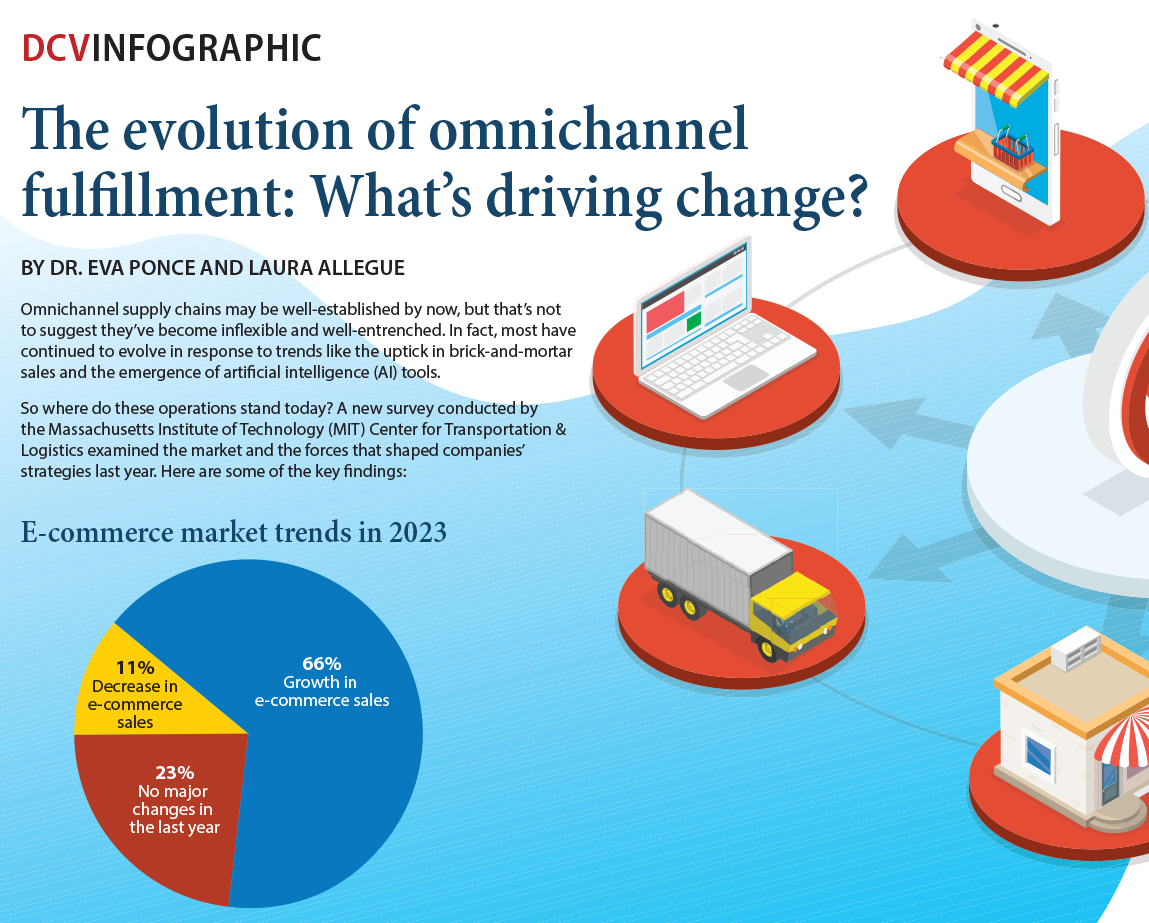Omnichannel Strategies That Drive Engagement and Growth in 2025
9/5/2025
Introduction to Omnichannel

In today’s fast-paced world, rising customer expectations are reshaping the logistics and eCommerce landscape. Shoppers now demand faster delivery, seamless shopping experiences across multiple platforms, and real-time updates on their orders. Meeting these heightened expectations requires businesses to adopt innovative solutions that go beyond traditional methods. One such solution is omnichannel fulfillment—a comprehensive approach that integrates inventory, order management, and delivery across all sales channels to provide a unified and efficient customer experience. This blog will explore the importance of an effective omnichannel logistics strategy in meeting modern customer demands. We’ll discuss the benefits it offers, such as improved supply chain visibility and enhanced last-mile delivery optimization. You’ll also learn about key strategies for success, including warehouse automation and digital logistics solutions. Additionally, we’ll compare omnichannel and multichannel fulfillment approaches, highlight the challenges businesses face, and cover crucial topics like reverse logistics in eCommerce. Whether you’re looking to streamline your supply chain or elevate customer satisfaction, understanding these elements is essential for staying competitive in today’s dynamic market.
What is Omnichannel Fulfillment?
Omnichannel fulfillment refers to a seamless approach to managing orders and deliveries across multiple sales channels, such as online stores, physical shops, and mobile apps, all working together to create a unified customer experience. Unlike multichannel logistics, where each channel operates independently, omnichannel logistics strategy integrates inventory, order processing, and delivery systems to ensure customers can shop and receive products in the way that suits them best. This approach directly addresses rising customer expectations in the supply chain, offering convenience, speed, and flexibility. The key difference between omnichannel and multichannel fulfillment lies in coordination. While multichannel treats each platform separately, omnichannel creates a connected network, enabling supply chain visibility and efficient last-mile delivery optimization. This customer-centric approach is enhanced by digital logistics solutions and warehouse automation for omnichannel, which help streamline operations and improve accuracy. Additionally, effective reverse logistics in eCommerce ensures smooth returns, further boosting customer satisfaction. Overall, an omnichannel logistics strategy is essential for businesses aiming to meet modern customer demands and stay competitive in today’s complex retail environment.
Why Omnichannel Matters in Today’s Logistics Landscape
In today’s logistics landscape, omnichannel fulfillment matters more than ever due to growing customer demands such as same-day delivery, flexible returns, and real-time order visibility. Customers expect a seamless shopping experience where they can easily track their orders and return products without hassle. Meeting these expectations requires an advanced omnichannel logistics strategy that integrates multiple sales channels and optimizes every step of the supply chain. This approach leverages digital logistics solutions, warehouse automation for omnichannel, and supply chain visibility to deliver faster, more reliable service that aligns with rising customer expectations in the supply chain. Poor logistics performance can severely impact customer loyalty, leading to lost sales and damaged brand reputation. Omnichannel fulfillment bridges the gap between supply chain efficiency and exceptional customer experience by enabling last-mile delivery optimization and smooth reverse logistics in eCommerce. Unlike multichannel fulfillment, which often creates fragmented customer journeys, an omnichannel approach ensures consistency and flexibility across all touchpoints. By investing in these technologies and strategies, businesses can not only meet but exceed customer expectations, driving retention and competitive advantage in an increasingly demanding market.
Key Benefits of Omnichannel Fulfillment

Omnichannel fulfillment offers numerous key benefits that directly address rising customer expectations in the supply chain. One major advantage is faster delivery, achieved through optimized inventory management and distribution across multiple locations. By leveraging warehouse automation for omnichannel operations and digital logistics solutions, businesses can ensure that products are closer to customers, enabling last-mile delivery optimization and reducing transit times. This streamlined approach also improves order accuracy and provides real-time supply chain visibility, allowing both businesses and customers to track shipments easily and reduce errors. Beyond operational efficiency, omnichannel logistics strategy enhances the customer experience by creating seamless interactions across all sales channels. Unlike multichannel fulfillment, which treats each channel separately, omnichannel fulfillment integrates processes to provide consistent service whether customers shop online, in-store, or via mobile. This integration supports flexible reverse logistics in eCommerce, making returns and exchanges hassle-free. Additionally, the scalability of an omnichannel approach enables logistics providers to grow and adapt to changing market demands, ensuring long-term success in a competitive retail environment.
Customer Expectations Driving Omnichannel Logistics
1. Speed & Flexibility: Multiple Shipping and Pickup Options
Today’s customers expect speed and flexibility when it comes to receiving their orders. An effective omnichannel logistics strategy offers multiple shipping and pickup options, such as same-day delivery, curbside pickup, and locker collection. This level of choice allows shoppers to select the most convenient and fastest method, driving last-mile delivery optimization and meeting rising customer expectations in the supply chain. Warehouse automation for omnichannel plays a vital role in quickly processing orders and distributing inventory across locations to support this flexibility.
2. Transparency, Convenience & Personalization
Transparency is key to building trust, with real-time tracking and proactive communication now essential features of digital logistics solutions. Customers want to know exactly where their orders are at every stage, which is made possible through enhanced supply chain visibility. Convenience also remains a priority—buyers expect to purchase online and return products anywhere, supported by smooth reverse logistics in eCommerce. Additionally, personalization of delivery preferences, such as preferred time slots or packaging options, further enhances the customer experience. Unlike multichannel fulfillment, an omnichannel approach integrates these elements seamlessly, ensuring consistent service across all channels and elevating customer satisfaction.

3. Strategies to Align Logistics with Omnichannel Fulfillment
To successfully implement an effective omnichannel logistics strategy, businesses must invest in integrated supply chain technology that connects inventory, order management, and delivery systems across all channels. Leveraging AI and predictive analytics helps improve demand forecasting, ensuring the right products are stocked in the right locations to meet customer expectations in the supply chain. Warehouse automation for omnichannel, including robotics and automated sorting systems, streamlines operations, reduces errors, and accelerates order fulfillment, which is crucial for last-mile delivery optimization. Partnering with reliable last-mile delivery providers further enhances speed and flexibility, allowing businesses to offer various shipping options that cater to customer preferences. Additionally, standardizing reverse logistics processes simplifies returns and exchanges, a critical aspect of eCommerce fulfillment that enhances customer satisfaction. Unlike multichannel fulfillment, which can create disconnected experiences, an omnichannel approach unifies these strategies through digital logistics solutions and supply chain visibility, ensuring seamless and efficient service across all touchpoints. By adopting these strategies, companies can stay competitive and meet the growing demands of today’s consumers.
4. Challenges in Implementing Omnichannel Fulfillment
Implementing an effective omnichannel logistics strategy comes with several challenges, starting with inventory management complexities. Coordinating inventory across multiple sales channels and warehouses requires advanced systems to maintain supply chain visibility and avoid stockouts or overstocking. This complexity often demands significant investment in digital logistics solutions and warehouse automation for omnichannel operations, which can lead to high technology adoption costs—another major hurdle for many businesses. Additionally, omnichannel fulfillment requires seamless coordination across multiple stakeholders, including suppliers, logistics providers, and last-mile delivery partners. Managing these relationships and ensuring smooth communication can be difficult but is essential for last-mile delivery optimization and meeting rising customer expectations in the supply chain. Inefficiencies in last-mile delivery and reverse logistics in eCommerce, such as delayed shipments or complicated return processes, can further impact customer satisfaction. Compared to multichannel fulfillment, where channels operate independently, omnichannel demands greater integration and collaboration, making it a complex but necessary strategy to stay competitive in today’s fast-evolving market.

5. Future Trends in Omnichannel Logistics
The future of omnichannel logistics strategy is being shaped by advanced technologies and evolving customer expectations in the supply chain. The Internet of Things (IoT) and real-time data sharing are becoming critical for enhancing supply chain visibility and enabling faster, more informed decision-making. These digital logistics solutions allow businesses to monitor inventory levels, track shipments, and optimize last-mile delivery in real time, ensuring greater accuracy and efficiency. As omnichannel fulfillment continues to outpace traditional multichannel models, companies investing in IoT integration and warehouse automation for omnichannel will gain a significant competitive advantage. Another exciting trend is the rise of drone and autonomous vehicle deliveries, which promise to revolutionize last-mile delivery optimization by reducing costs and speeding up shipping times. Alongside these innovations, there is a growing emphasis on sustainable and green logistics practices to meet increasing consumer demand for environmentally responsible supply chains. This includes eco-friendly packaging, optimized routing to reduce emissions, and energy-efficient warehouse automation. Reverse logistics in eCommerce will also become more streamlined, supporting easier returns while minimizing waste. Together, these trends highlight how the future of omnichannel logistics will be driven by technology, sustainability, and a relentless focus on enhancing the customer experience.
Conclusion
In today’s competitive market, adopting an omnichannel logistics strategy is no longer optional—it’s essential to meet evolving customer expectations in the supply chain. Logistics companies must shift toward customer-first strategies that prioritize supply chain visibility, last-mile delivery optimization, and seamless reverse logistics in eCommerce. By embracing digital logistics solutions and warehouse automation for omnichannel fulfillment, businesses can deliver a consistent, efficient experience that outperforms traditional multichannel approaches. To stay ahead, companies should explore innovative technologies that enhance flexibility and transparency, ensuring they meet modern demands and drive long-term success.